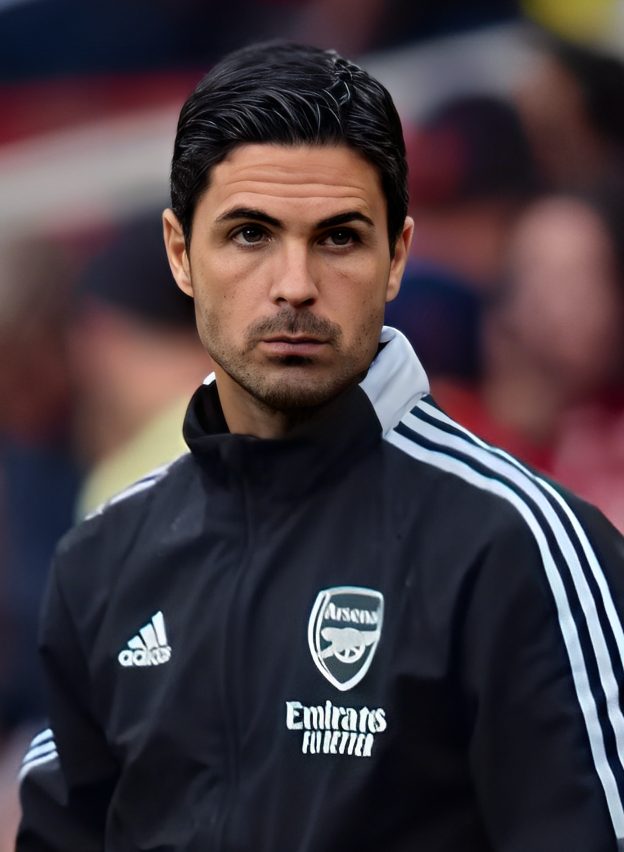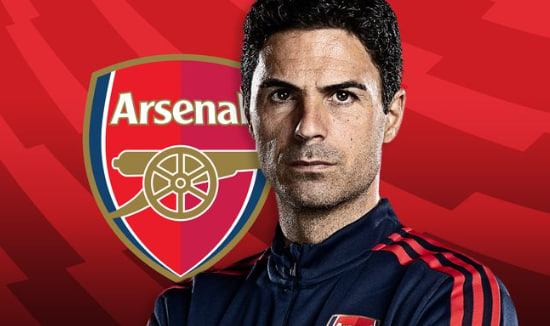At Arsenal’s training ground in London, head coach Mikel Arteta has just finished explaining tactics. He puts down his tablet, walks to the window, and watches the players training. The 41-year-old Spanish coach recently led the team to victory over Premier League champions Manchester City, breaking a 12-game winless streak.However, when asked by reporters if he was satisfied, his reaction was somewhat unusual—he instinctively turned his wedding ring, as if there were greater goals yet to be achieved. “We’ve just climbed a small hill; the real peak is still ahead of us.” This statement is intriguing, reflecting both his calm attitude toward current achievements and his ambition for the future.
Tactical “Mathematical Thinking”
This season, Arsenal ranks third in the Premier League in terms of possession, controlling the ball 61.2% of the time on average per game. However, Arteta is not concerned with possession time, but rather the number of times his team enters the opponent’s penalty area. He is not particularly concerned with how well his team plays, but rather the quality of each attack.

He even created his own scoring system called the “chance quality index,” which divides each shot into nine levels.Only shots that meet at least three criteria are considered “high-quality.” This approach sounds a bit like cooking—it’s not about how many ingredients you use, but how good it tastes. It is this strict scoring system that has raised the team’s expected goals per game from 1.3 two years ago to 2.1 today. In simple terms, the team’s chances of scoring in each game have increased, like going from flipping a coin to aiming and shooting.
“Brain training” in the locker room
The young Saka and experienced Jorginho often stay after practice to work on set pieces. But they practice differently than before. The electronic screen on the sidelines no longer displays traditional numbers, but rather each player’s decision-making score during the game. This is a new training method introduced by Arteta that combines neuroscience to analyze players’ judgment by tracking eye movements and brain waves.
This system is like a virtual training space that helps players make faster and better decisions on the field. As a result, the team’s off-the-ball running distance has increased by 18%, which means that even when they don’t have the ball, they are constantly looking for open spaces and creating threats. It’s like weaving an invisible net on the field that makes it harder and harder for our opponents to breathe.
Injured? Don’t worry, the algorithm is here to help
Once, the team’s star player, Timber, was injured, and the locker room atmosphere became tense. However, the medical team quickly responded with a high-tech device. This device, worth over a million pounds, uses 270 sensors to monitor players’ physical condition in real time, predict muscle fatigue levels, and prevent injuries before they occur.
Since the system was implemented, injuries caused by muscle issues have decreased by 43%. Arteta also uses this data to optimize rotation schedules, ensuring players don’t become overly fatigued. Even under the pressure of multiple competitions, the team averages 21.3 kilometers per player per game—a figure nearly equivalent to the physical endurance of a Tour de France cyclist.
A new approach to nurturing future stars
Beneath the Emirates Stadium lies a state-of-the-art training lab designed specifically for young players. Here, 15-year-old players wear VR goggles to simulate the high-pressure scenarios of a Champions League knockout match. Arteta has collaborated with universities to develop a psychological training system aimed at testing and enhancing the mental resilience of young athletes.
This system has already produced five young players who are ready to join the first team, and they have grown at more than twice the speed of traditional methods. You can think of it as an accelerated growth model, like putting wine in a technological environment to ferment quickly while retaining its original flavor.
Beyond the data, there is the power of emotion
Although Arteta is a data-driven individual, he is not a cold, unfeeling machine. During a period when the team had three consecutive draws, morale was low. Instead of showing past match footage, Arteta played a clip of Winston Churchill’s speech from the film “Dunkirk.” He wanted to remind everyone to stay resilient in the face of adversity.
Interestingly, there is an old clock in Arteta’s office, with the hands frozen on May 7, 2006. That was the day he last saw Arsenal reach the Champions League final as a player. This small detail shows that he is not just a data-driven modern coach, but also has his own emotions and dreams.
Conclusion: The victory of the obsessive
As night fell, the lights at the Colney Training Ground came on, and Arteta remained standing before the tactical board, meticulously outlining the game plan. His suit jacket was draped over a chair, and the cuffs of his shirt were stained with ink from the tactical pen. On the large screen in the distance, the Premier League standings scrolled by, with Arsenal’s name fluctuating between second and third place.
For Arteta, football is like solving a complex equation, and he firmly believes the answer lies within. Perhaps, as Wenger once said in Latin, “Progress through science.” Today, we can add another line: “Between data and passion, find your own path to victory.”

